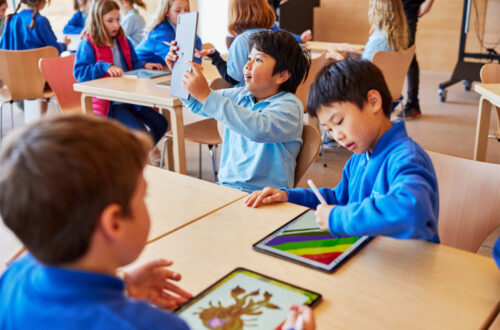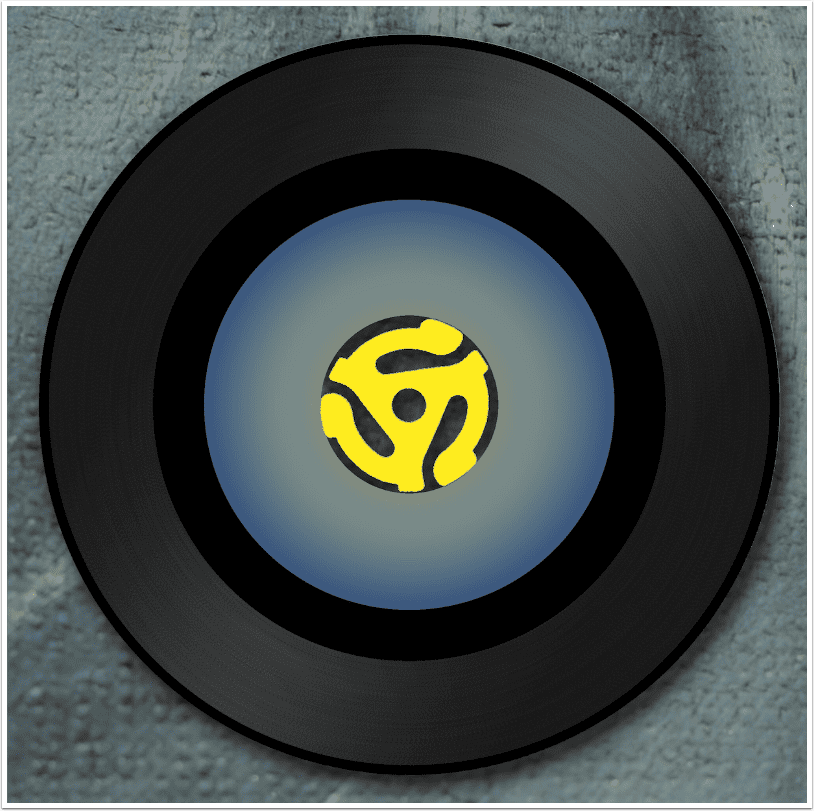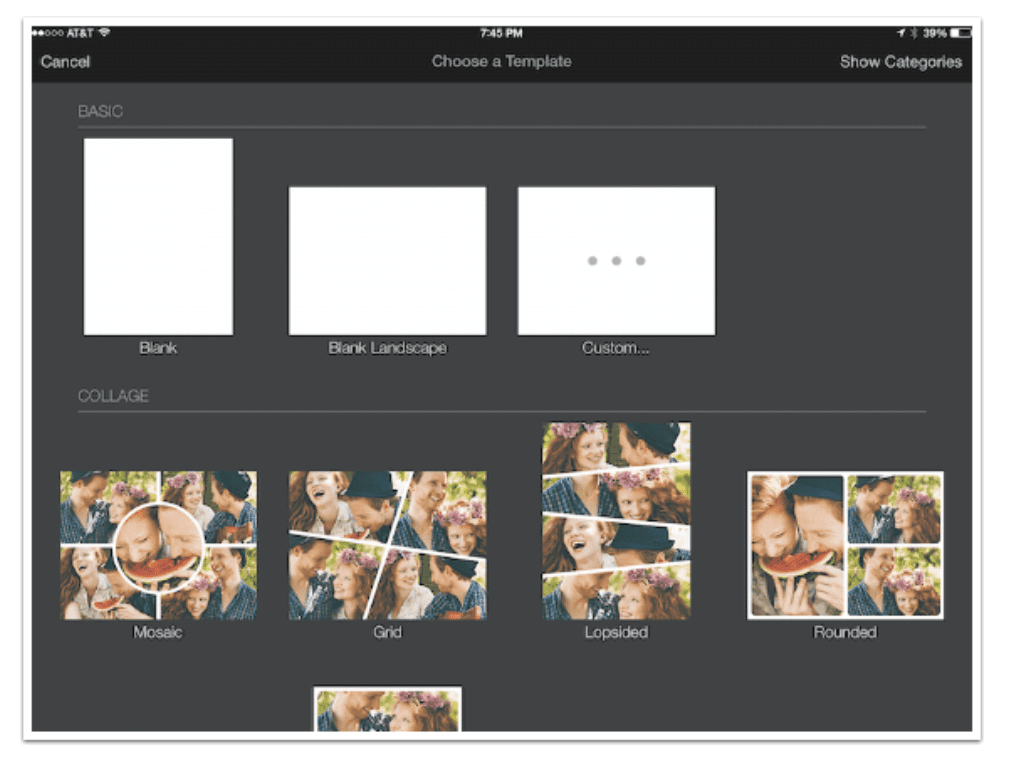
Creating An Alternative Reality – Mobile Street Photography by Paul Brown
We are delighted to publish this fabulous iPhone Photography workflow by Paul Brown. This time Paul Brown provides some wonderful advice and tips to aid your street photography. We have the greatest respect for Paul Brown’s articles and we’re delighted to add this to our Paul Brown archive, you can read that here. Over to you Paul (foreword by Joanne Carter)…
To view Paul’s website, please go here
“How annoying is street photography when you have the elements you like but you can’t get them quite where you want them? That’s the nature of candid street photography I guess.
I don’t quite see myself in that genre though. It’s not a naturally comfortable environment. The candid street images I see are inspirational and so I keep plugging away but only when I’m feeling at ease. When people take it a stage further and start heading towards street portraiture then things really go way beyond my own style. The famous quote “If your photographs aren’t good enough, you’re not close enough” 1 never far from my mind”.
Street photography Skip style – what’s it all about?
There are a few elements that I look for that enable me to get semi-comfortable:
All the world’s a stage, and all the men and women merely players –William Shakespeare
Find a location and then wait for something to happen.
I’ve said in the past that I see myself as a fisherman rather than a hunter when it comes to Street photography. Sit quietly and wait rather than chase. If I am already settled and relaxed in a location and someone interesting wanders through my ‘stage’ then that’s the shot I want. I also feel that as the subject came to me rather than me racing around the street like a madman there can be few complaints it I grab a shot.
I am an expressionist and by that I mean that I’m not a photographer or a writer or a painter or a tap dancer, but rather someone who expresses himself according to his needs – Duane Michals
It doesn’t have to be documentary.
I regard all my images as raw material. If I want an alternate reality out of an image then so be it. I have to say that many are straight out of camera and so documentary in style. Maybe there’ll be a bit of straightening, sharpening, etc. If I want to get more creative though I will. (Provoke or Hipstamatic are my street iPhone camera replacement apps at the moment so when I say ‘straight out of camera’ that doesn’t necessarily mean ‘pure’ – an element of processing at the point of capture will occur).
A photographer must be prepared to catch and hold on to those elements which give distinction to the subject or lend it atmosphere. Bill Brandt 4
I want my images to be atmospheric.
I want to capture or create atmosphere. That could be something tangible like fog or it could be something less obvious that I create in processing or that the capture app has introduced in its random way. Happy accidents are always welcome.
The inspiration for this article came from a week away in Portugal. Until I studied some shots closely, I discarded them as a waste of a tap. When I did get chance to look at them through fresh eyes though, I saw a few things that I liked. Specifically regarding this image, I used two captures as raw material for a single atmospheric composition.
iPhone photography apps used: FrontView • Mextures • ProCamera8 • Snapseed • Superimpose
Image Copyright Paul Brown
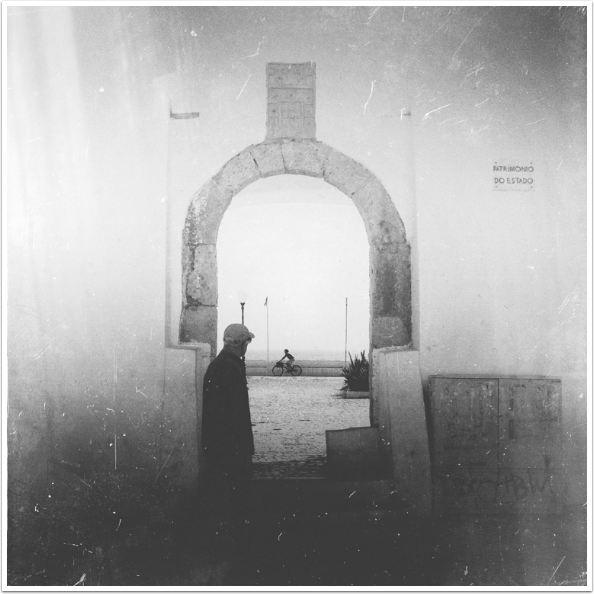
Process and apps used
ProCamera8 ~ first initial capture:
I liked the relationship between the gentleman walking past the entrance and the coincidence of the cyclist in the background which was a happy accident:
I disliked the position of the lady to the right of the image:
Image Copyright Paul Brown
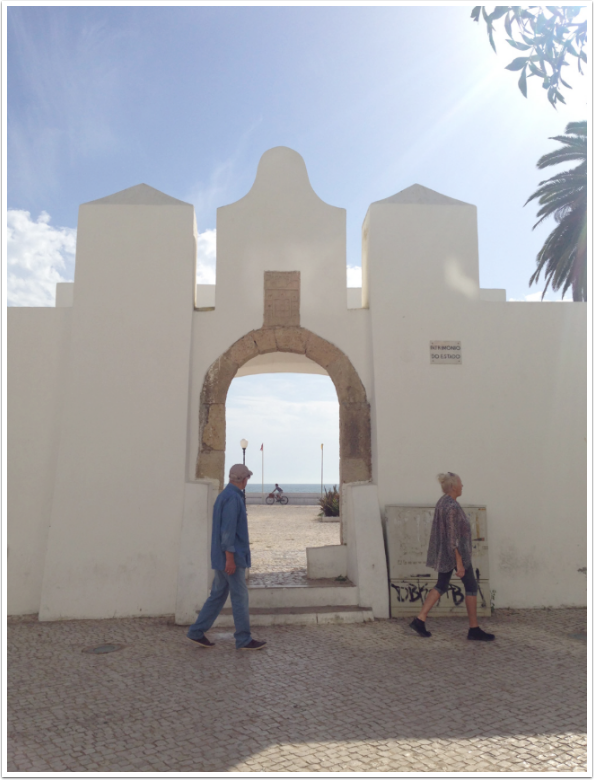
ProCamera8 ~ second initial capture:
Fortunately I had tapped a second or so earlier from the same position and so the area I disliked in the main image was free from the distraction:
Image Copyright Paul Brown
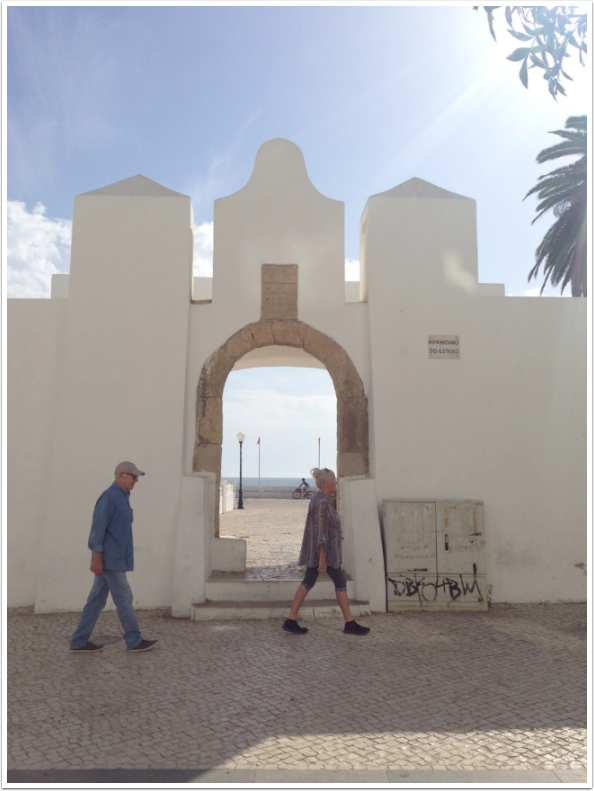
Superimpose ~ very quickly, using the second capture as the background and the first capture as the foreground I was able to align the images and mask the figure out of the image:
Image Copyright Paul Brown
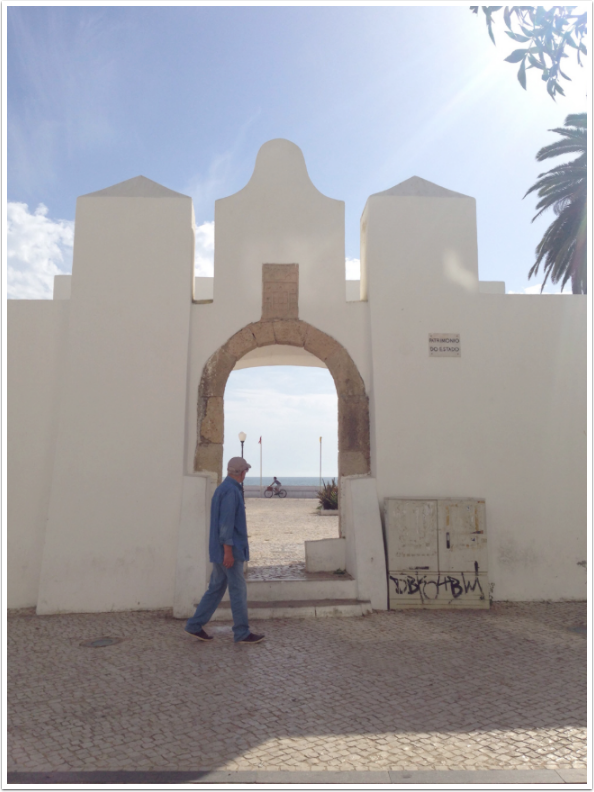
The Process in Superimpose:
Superimpose ~ having imported both images I switch to the ‘Transform’ area and set the opacity to 50pct temporarily. This allows me to see through the foreground image and ensure the important area I plan to mask is aligned. I then adjust the opacity back to 100pct:
Image Copyright Paul Brown
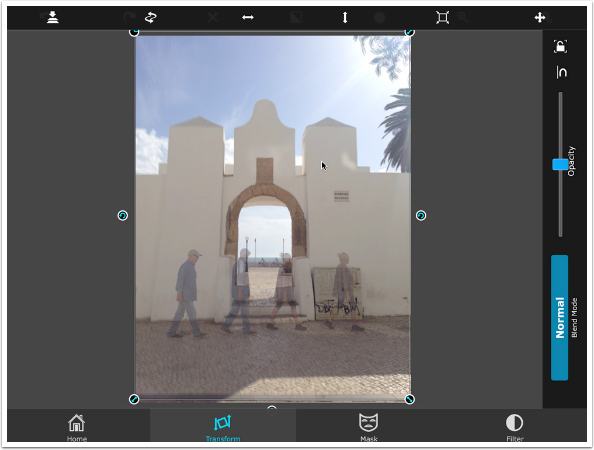
Superimpose ~ once the images are aligned using the brush tool I paint a mask over the figure. This reveals the figure free background image. The effect is basically to erase the female figure:
Image Copyright Paul Brown
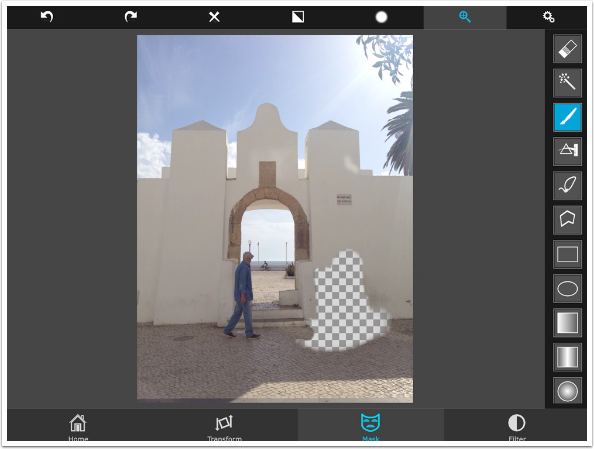
Snapseed ~ a square crop and then my standard detail enhancement process which tends to be ‘structure’ +25 and ‘sharpening’ +15:
Image Copyright Paul Brown
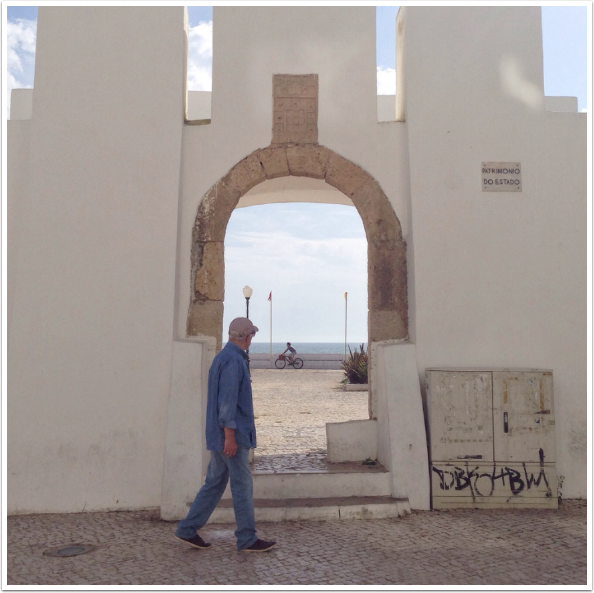
FrontView ~ I’ve talking about simulating the shifting effect to correct vertical distortion in other workflows. I repeat the process here:
It is fair to say that had I been certain of where the final Mextures process would take me, this stage could have been skipped:
Image Copyright Paul Brown
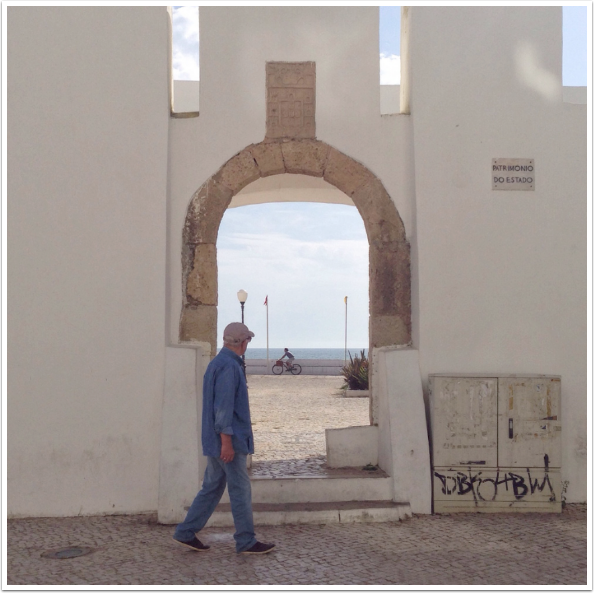
Mextures ~ for non-painterly textured processing Mextures is my preferred app. I have devoted an entire tutorial to it:
I am trying to create a cohesive set of images. Each one is based on my own formula but then needs adjusting on an image by image basis (this image has 13 active textures applied to create the formula). The key element I want for the cohesive set is the dark bottom gradually fading to a light top:
I am enjoying how the detail in the image gradually emerges from the mysterious bottom. It feels a little like the reverse of the foggy images I enjoy but with a similar atmospheric result:
Image Copyright Paul Brown
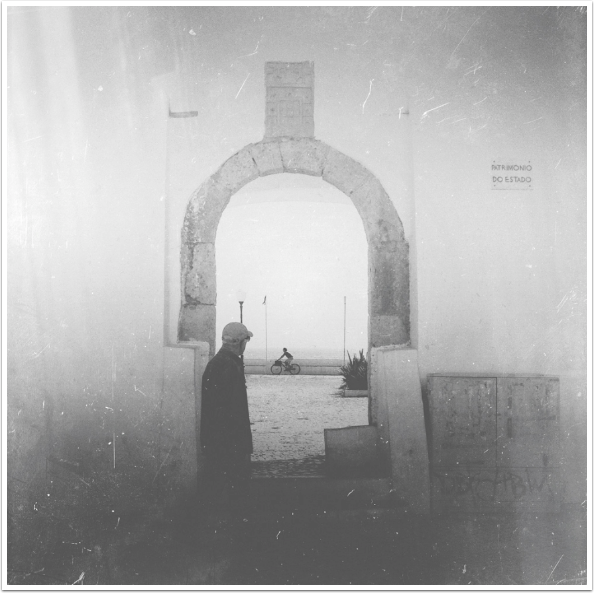
Snapseed ~ finally, the image is brought back into Snapseed and a black and white conversion applied – either the unadjusted darken or contrast preset depending on the image. This image has the darken preset applied:
Image Copyright Paul Brown
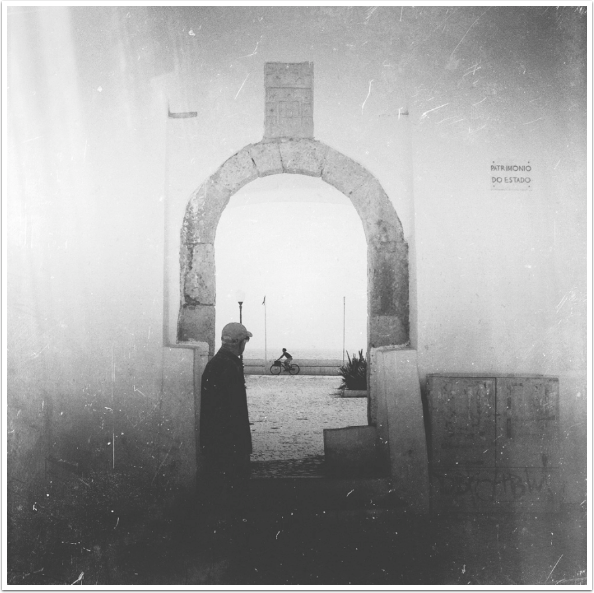
Further Reading/References
- Robert Capa (born Endre Friedmann; October 22, 1913 – May 25, 1954) was a Hungarian war photographer and photojournalist who covered five wars: the Spanish Civil War, the Second Sino-Japanese War, World War II across Europe, the 1948 Arab-Israeli War, and the First Indochina War. He documented the course of World War II in London, North Africa, Italy, the Battle of Normandy on Omaha Beach and the liberation of Paris. In 1947, Capa co-founded Magnum Photos in Paris with David “Chim” Seymour, Henri Cartier-Bresson, George Rodger and William Vandivert. The organisation was the first cooperative agency for worldwide freelance photographers… Capa is known for redefining wartime photojournalism. His work came from the trenches as opposed to the more arms-length perspective that was the precedent. He was famed for saying, “If your photographs aren’t good enough, you’re not close enough.”…at ‘Wikipedia‘ ↩
- “All the world’s a stage” is the phrase that begins a monologue from William Shakespeare’s As You Like It, spoken by the melancholy Jaques in Act II Scene VII. The speech compares the world to a stage and life to a play, and catalogues the seven stages of a man’s life, sometimes referred to as the seven ages of man…at ‘Wikipedia‘ ↩
- Duane Michals (born February 18, 1932) is an American photographer. Michals’s work makes innovative use of photo-sequences, often incorporating text to examine emotion and philosophy…at ‘Wikipedia‘ ↩
- Bill Brandt (born Hermann Wilhelm Brandt, 2 May 1904 – 20 December 1983), was a British photographer and photojournalist. Although born in Germany, Brandt moved to England, where he became known for his images of British society for such magazine as “Lilliput” and “Picture Post”, later his distorted nudes, portraits of famous artists and landscapes. He is widely considered to be one of the most important British photographers of the 20th century…at ‘Wikipedia‘ ↩
Please support us
TheAppWhisperer has always had a dual mission: to promote the most talented mobile artists of the day and to support ambitious, inquisitive viewers the world over. As the years passTheAppWhisperer has gained readers and viewers and found new venues for that exchange.
All this work thrives with the support of our community.
Please consider making a donation to TheAppWhisperer as this New Year commences because your support helps protect our independence and it means we can keep delivering the promotion of mobile artists thats open for everyone around the world. Every contribution, however big or small, is so valuable for our future.
